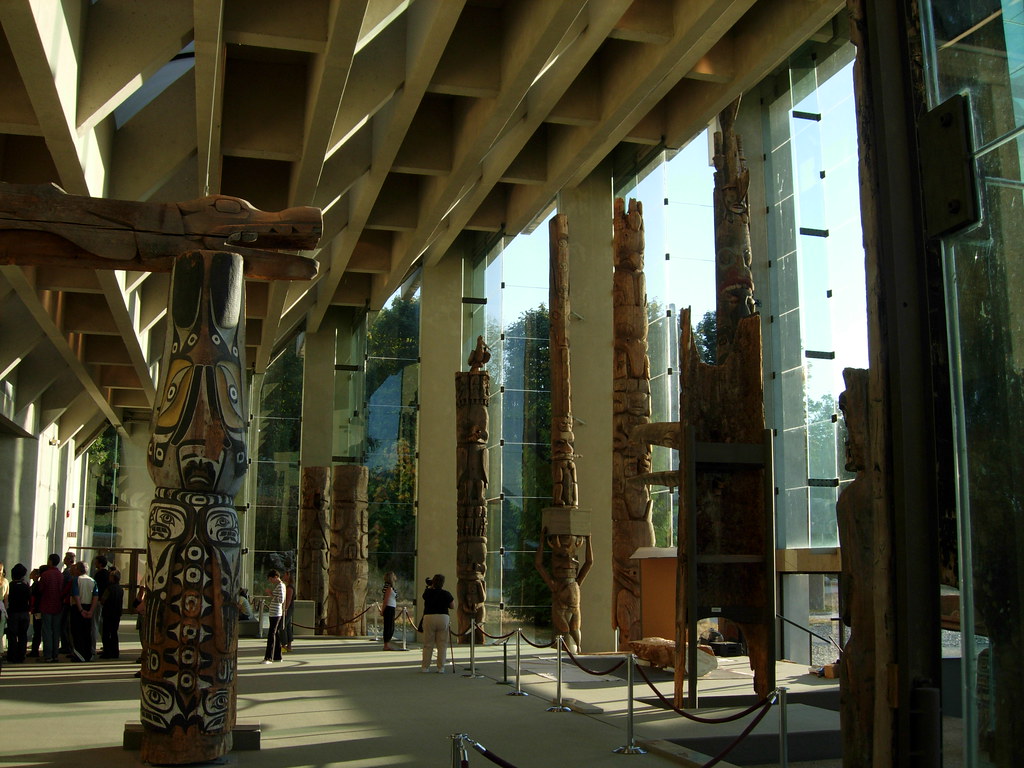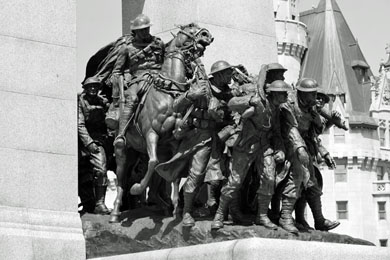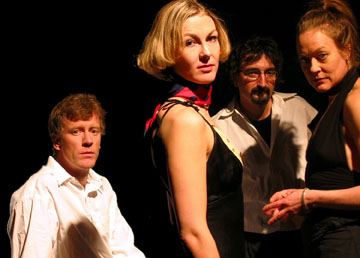Browse "Buildings & Monuments"
-
Article
Moravian Missions in Labrador
In 1771, Moravian missionaries were the first Europeans to settle in Labrador. Over a 133-year period, they established a series of eight missions along the coast which became the focus of religious, social and economic activities for the Inuit who gradually came to settle near the communities. Moravians had a huge impact on the life and culture of Labrador Inuit. What emerged was a unique culture rooted in Inuit traditions with indigenized European practices. The last Moravian missionary left Labrador in 2005, but the Moravian church, its customs and traditions are still very much alive in Labrador.
"https://d2ttikhf7xbzbs.cloudfront.net/media/new_article_images/MoravianMissionsinCanada/Eine-Schulergrupper-in-Nain-Resized.jpg" // resources/views/front/categories/view.blade.php
https://d2ttikhf7xbzbs.cloudfront.net/media/new_article_images/MoravianMissionsinCanada/Eine-Schulergrupper-in-Nain-Resized.jpg
-
Article
Musée d'art contemporain de Montréal
Situated in the heart of MONTRÉAL, The Musée d'art contemporain de Montréal plays an essential role in the presentation of QUÉBEC and international art.
"https://development.thecanadianencyclopedia.ca/images/tce_placeholder.jpg?v=e9dca980c9bdb3aa11e832e7ea94f5d9" // resources/views/front/categories/view.blade.php
https://development.thecanadianencyclopedia.ca/images/tce_placeholder.jpg?v=e9dca980c9bdb3aa11e832e7ea94f5d9
-
Article
Musée de l'Amérique francophone
Established in 1806 by the Séminaire de Québec, the Musée de l'Amérique francophone is the oldest museum in Canada.
"https://d2ttikhf7xbzbs.cloudfront.net/media/media/8b6b148e-044b-4ca9-a70a-2080d5773590.jpg" // resources/views/front/categories/view.blade.php
https://d2ttikhf7xbzbs.cloudfront.net/media/media/8b6b148e-044b-4ca9-a70a-2080d5773590.jpg
-
Article
Musée national des beaux-arts du Québec
The Musée national des beaux-arts du Québec in Quebec City houses the world’s most extensive collection of Québécois art, ranging from the paintings of such 19th-century masters as James Wilson Morrice and Cornelius Krieghoff to contemporary artists such as the Quebec City-based collective BGL. It also holds collections of early, modern and contemporary Canadian art, including an extensive collection of Inuit art. Since it opened in 1933, the Musée has designed, organized and hosted hundreds of exhibitions. Expanded in 1991 and again in 2016, the four-pavilion complex includes numerous exhibition galleries and workshops, an auditorium and a sculpture garden. The Musée also plays a role in the community through its library, educational service, and photographic documentation centre.
"https://d2ttikhf7xbzbs.cloudfront.net/media/media/f53111aa-c23e-4ab9-ae3b-987426735fdf.jpg" // resources/views/front/categories/view.blade.php
https://d2ttikhf7xbzbs.cloudfront.net/media/media/f53111aa-c23e-4ab9-ae3b-987426735fdf.jpg
-
Article
Pointe-à-Callière, the Montréal Museum of Archaeology and History
A major attraction in Old Montréal, this museum complex was opened on 17 May 1992 to showcase and raise awareness of Montréal’s history and archaeology.
"https://d2ttikhf7xbzbs.cloudfront.net/media/media/46a0552e-09e8-4fd7-b8be-a9f484804df1.jpg" // resources/views/front/categories/view.blade.php
https://d2ttikhf7xbzbs.cloudfront.net/media/media/46a0552e-09e8-4fd7-b8be-a9f484804df1.jpg
-
Article
Museum of Anthropology
The Museum of Anthropology (MOA) at the University of British Columbia was established in 1949. The MOA’s current location opened in 1976. The MOA’s collection includes ethnographic and archaeological objects from around the world and it is widely recognized for its collection of Northwest Coast Indigenous Art. (See also Northwest Coast Indigenous Peoples in Canada.) In addition to research, the museum provides public programs and exhibitions. It also serves as a teaching museum, providing training in museum studies and conservation. (See also Anthropology in Canada; Archaeology.)
"https://d2ttikhf7xbzbs.cloudfront.net/museumofanthropology/greathallmoa.jpg" // resources/views/front/categories/view.blade.php
https://d2ttikhf7xbzbs.cloudfront.net/museumofanthropology/greathallmoa.jpg
-
Article
National Assembly
The National Assembly (Assemblée Nationale) is the unicameral provincial legislature of Québec.
"https://d2ttikhf7xbzbs.cloudfront.net/media/media/f2856716-0ae7-436d-8286-d8fc3df5b4ca.jpg" // resources/views/front/categories/view.blade.php
https://d2ttikhf7xbzbs.cloudfront.net/media/media/f2856716-0ae7-436d-8286-d8fc3df5b4ca.jpg
-
Article
National War Memorial
The National War Memorial in Ottawa was originally built to commemorate Canada's sacrifice in the First World War (1914–18). It now honours all who have served Canada in wartime.
"https://d2ttikhf7xbzbs.cloudfront.net/media/media/b0914be8-66f3-4128-9ed6-84f814d2d612.jpg" // resources/views/front/categories/view.blade.php
https://d2ttikhf7xbzbs.cloudfront.net/media/media/b0914be8-66f3-4128-9ed6-84f814d2d612.jpg
-
Article
Notre-Dame Basilica of Montréal
Notre-Dame Basilica of Montréal is located at the intersection of Notre-Dame Street West and Saint-Sulpice Street in the borough of Ville-Marie in Montréal. This jewel of Québec’s religious heritage was built by the Sulpicians over the years 1824 to 1829, to serve as a parish church. It is one of the oldest examples of Gothic Revival religious architecture in Canada. At the time it was built, it was a daring, innovative edifice on a scale unequalled anywhere else in North America. The architect was James O’Donnell, an Irish immigrant to New York City. Its interior decor, which was overseen by Victor Bourgeau, along with its rich ornamentation, are unique and evoke a true sense of wonder in visitors. The Basilica is also one of the major tourist attractions in the city of Montréal.
"https://d2ttikhf7xbzbs.cloudfront.net/media/media/e0e4475d-ea0c-44c7-ab1c-4b49eb8f9dcc.jpg" // resources/views/front/categories/view.blade.php
https://d2ttikhf7xbzbs.cloudfront.net/media/media/e0e4475d-ea0c-44c7-ab1c-4b49eb8f9dcc.jpg
-
Article
One Yellow Rabbit Performance Theatre
For its first six years, One Yellow Rabbit was run as a collective by founding members Gyllian Raby (its artistic director), Michael Green, Blake Brooker, Nigel Scott, Kirk Miles, Jan Stirling, George McFaul and Marianne Moroney.
"https://d2ttikhf7xbzbs.cloudfront.net/media/media/34830d23-e6a3-4146-b3c3-48841770d398.jpg" // resources/views/front/categories/view.blade.php
https://d2ttikhf7xbzbs.cloudfront.net/media/media/34830d23-e6a3-4146-b3c3-48841770d398.jpg
-
Article
Ontario Place Forum
Ontario Place Forum. Outdoor amphitheatre, part of Ontario Place, a provincially-operated recreational park opened in 1971 on three man-made islands off the Toronto waterfront. The Forum is circular in design and set in a basin created by four hills.
"https://development.thecanadianencyclopedia.ca/images/tce_placeholder.jpg?v=e9dca980c9bdb3aa11e832e7ea94f5d9" // resources/views/front/categories/view.blade.php
https://development.thecanadianencyclopedia.ca/images/tce_placeholder.jpg?v=e9dca980c9bdb3aa11e832e7ea94f5d9
-
Article
Orford Arts Centre/Centre d'arts Orford
Orford Arts Centre/Centre d'arts Orford (JMC Music Camp 1951-67; JMC Orford Art(s) Centre 1967-86). Summer music camp and cultural centre established in 1951 by the Jeunesses musicales of Canada (Youth and Music Canada) in Mount Orford Provincial Park near Magog, 112 km from Montreal. Covering 88.
"https://development.thecanadianencyclopedia.ca/images/tce_placeholder.jpg?v=e9dca980c9bdb3aa11e832e7ea94f5d9" // resources/views/front/categories/view.blade.php
https://development.thecanadianencyclopedia.ca/images/tce_placeholder.jpg?v=e9dca980c9bdb3aa11e832e7ea94f5d9
-
Article
Orpheum Theatre (Vancouver)
Opened in 1927 as a movie theatre palace and vaudeville house, Vancouver’s Orpheum Theatre was for many years Canada's largest and most opulent theatre. A much-loved concert space and architectural gem, the 2,688-seat venue located at 884 Granville Street was revitalized in the mid-1970s and recognized as a National Historic Site in 1979. Operated by Vancouver Civic Theatres, it remains one of Canada's premier concert halls and presents a wide variety of classical and contemporary performances. It is the permanent home of the Vancouver Symphony Orchestra (VSO) and has been the main venue for the Vancouver Bach Choir, the Vancouver Cantata Singers, the Vancouver Chamber Choir and the Vancouver Recital Society.
"https://d2ttikhf7xbzbs.cloudfront.net/media/media/025832f7-751c-4383-b71e-301b8ad133d8.jpg" // resources/views/front/categories/view.blade.php
https://d2ttikhf7xbzbs.cloudfront.net/media/media/025832f7-751c-4383-b71e-301b8ad133d8.jpg
-
Article
Orpheum Theatre
Designed by architect Benjamin Marcus Priteca in "conservative Spanish Renaissance" style and financed by Vancouver businessman Joseph Langer, the Orpheum Theatre was for many years Canada's largest and most opulent theatre.
"https://d2ttikhf7xbzbs.cloudfront.net/media/media/025832f7-751c-4383-b71e-301b8ad133d8.jpg" // resources/views/front/categories/view.blade.php
https://d2ttikhf7xbzbs.cloudfront.net/media/media/025832f7-751c-4383-b71e-301b8ad133d8.jpg
-
Article
Orpheum Theatre (Montréal)
The Orpheum Theatre/Théâtre Orpheum was an 1,100-seat auditorium located at 525 Sainte-Catharine Street West in Montréal.
"https://development.thecanadianencyclopedia.ca/images/tce_placeholder.jpg?v=e9dca980c9bdb3aa11e832e7ea94f5d9" // resources/views/front/categories/view.blade.php
https://development.thecanadianencyclopedia.ca/images/tce_placeholder.jpg?v=e9dca980c9bdb3aa11e832e7ea94f5d9
